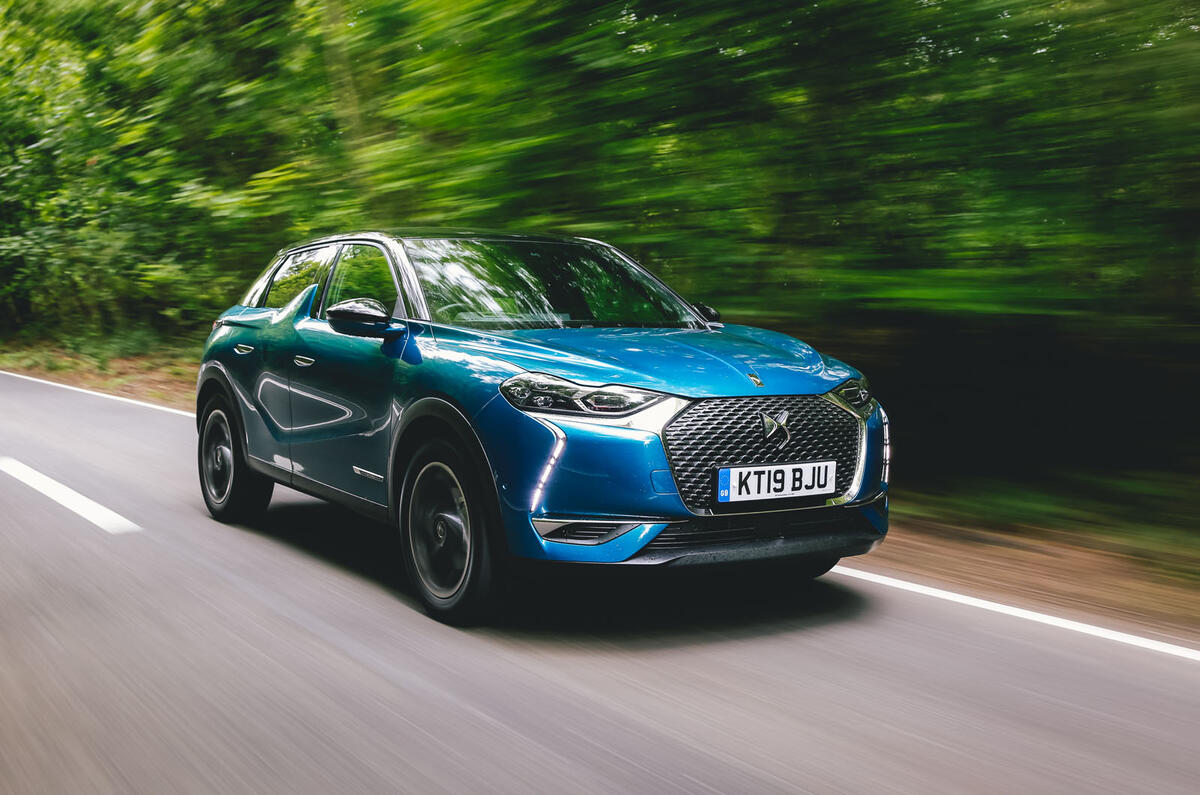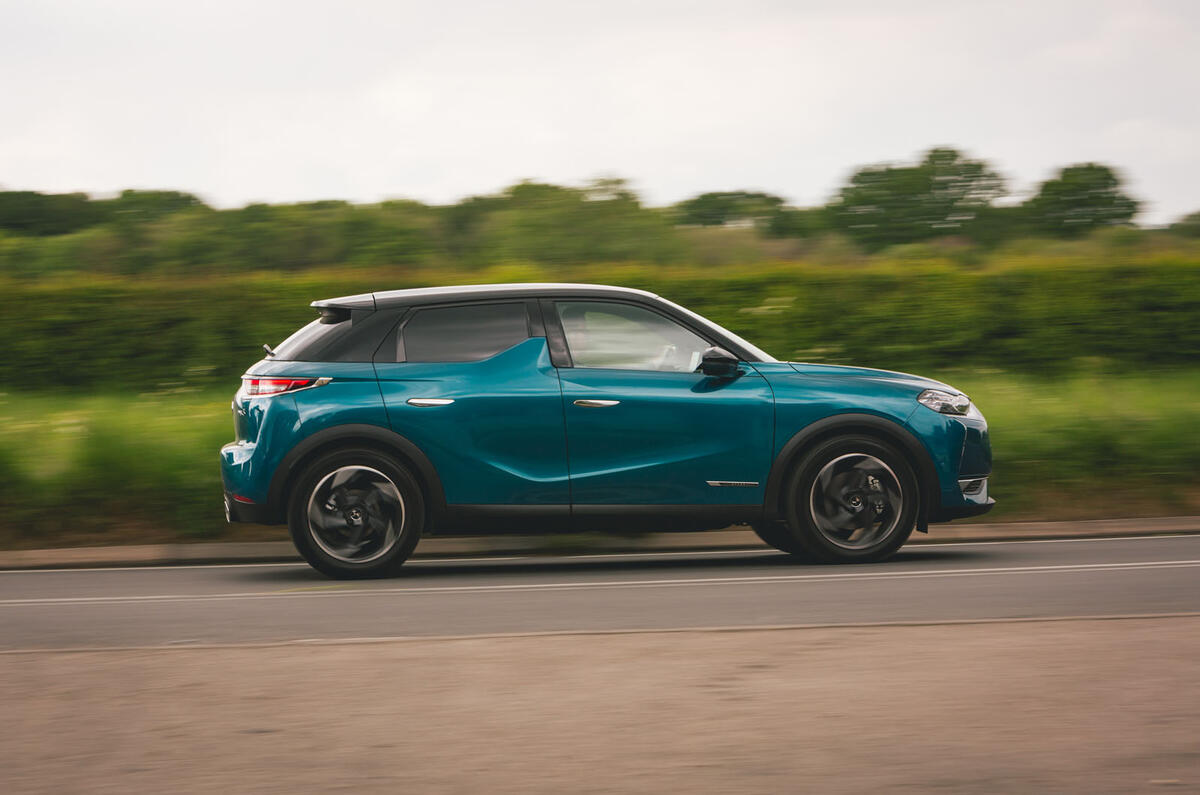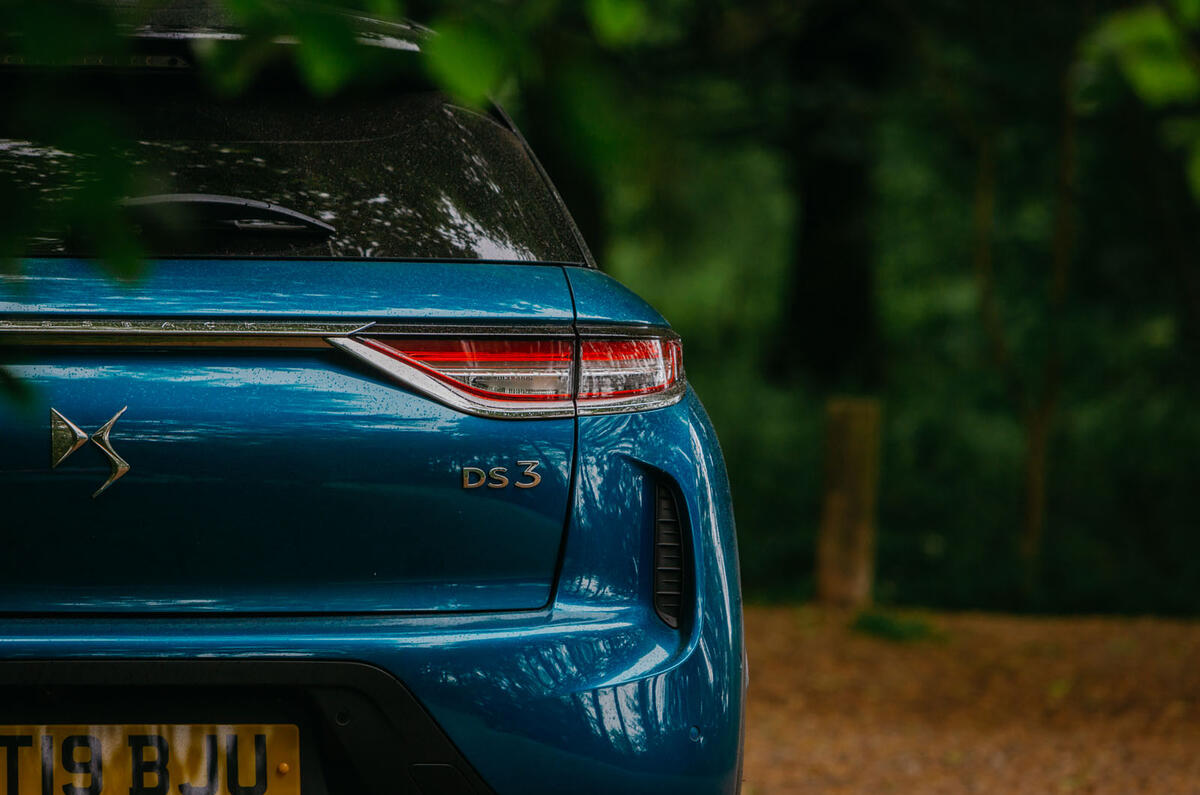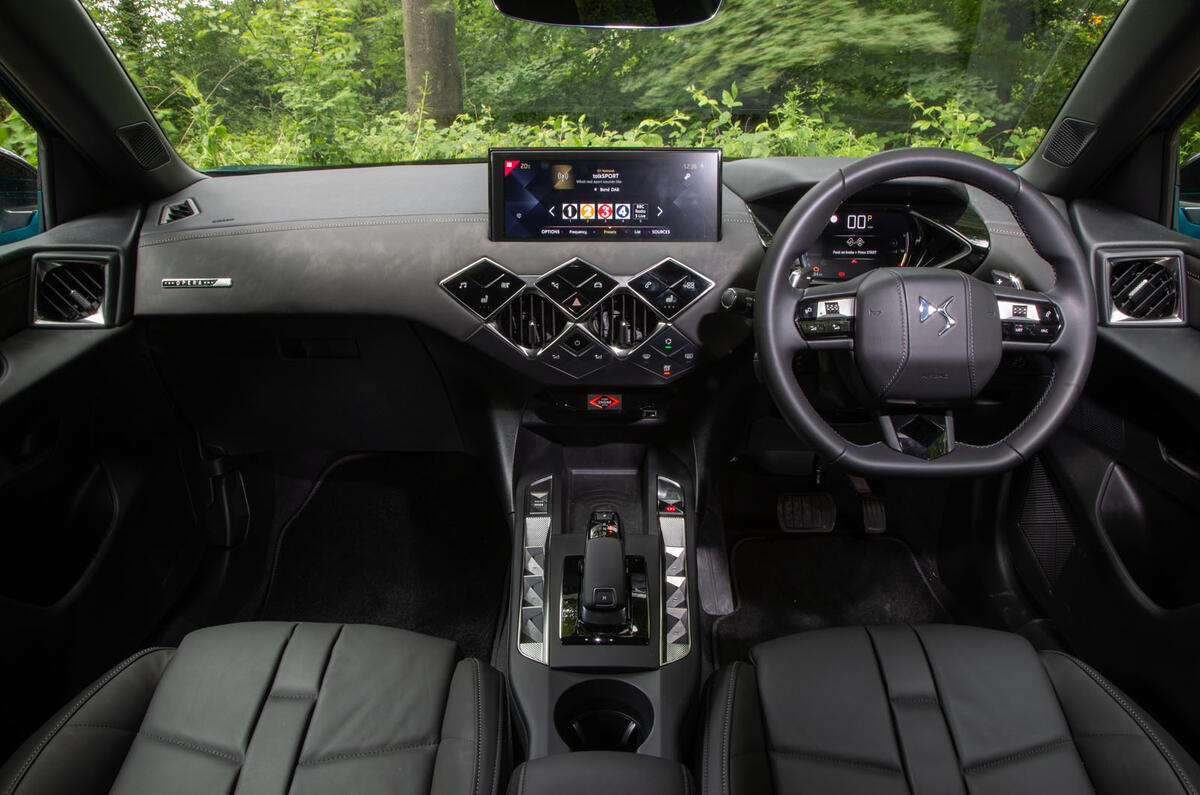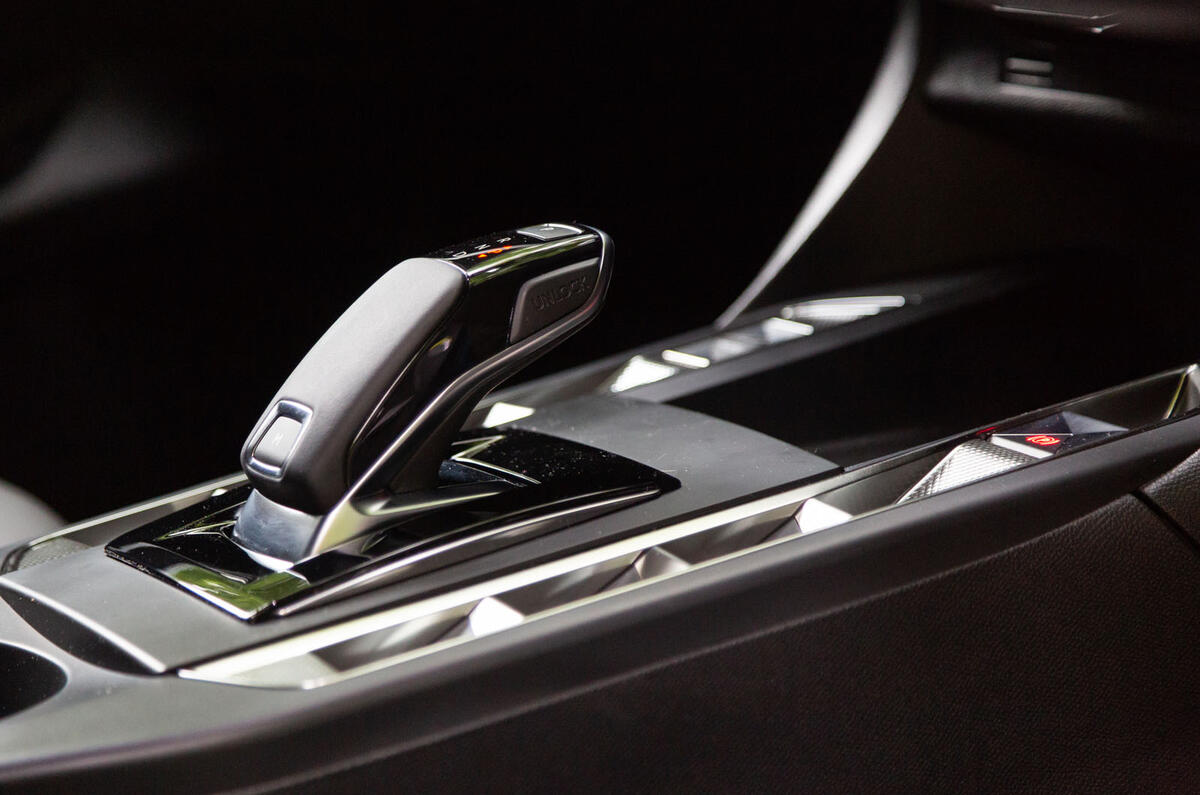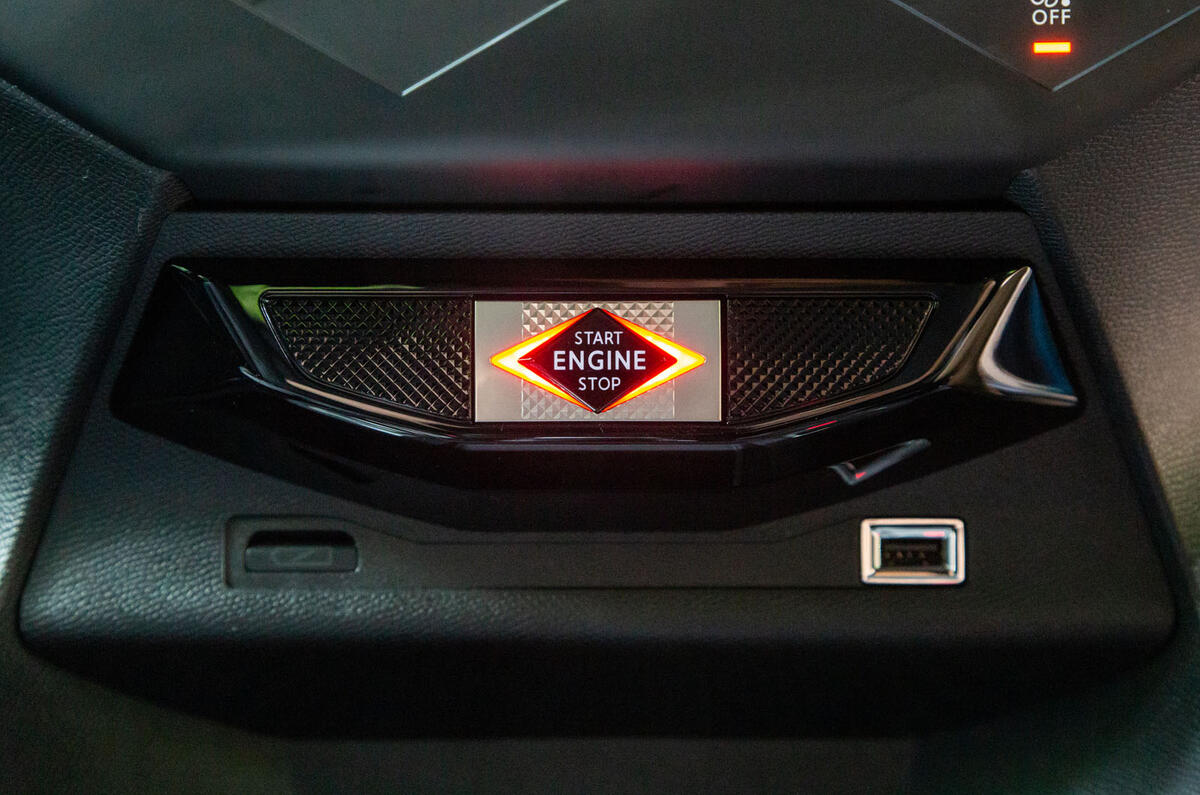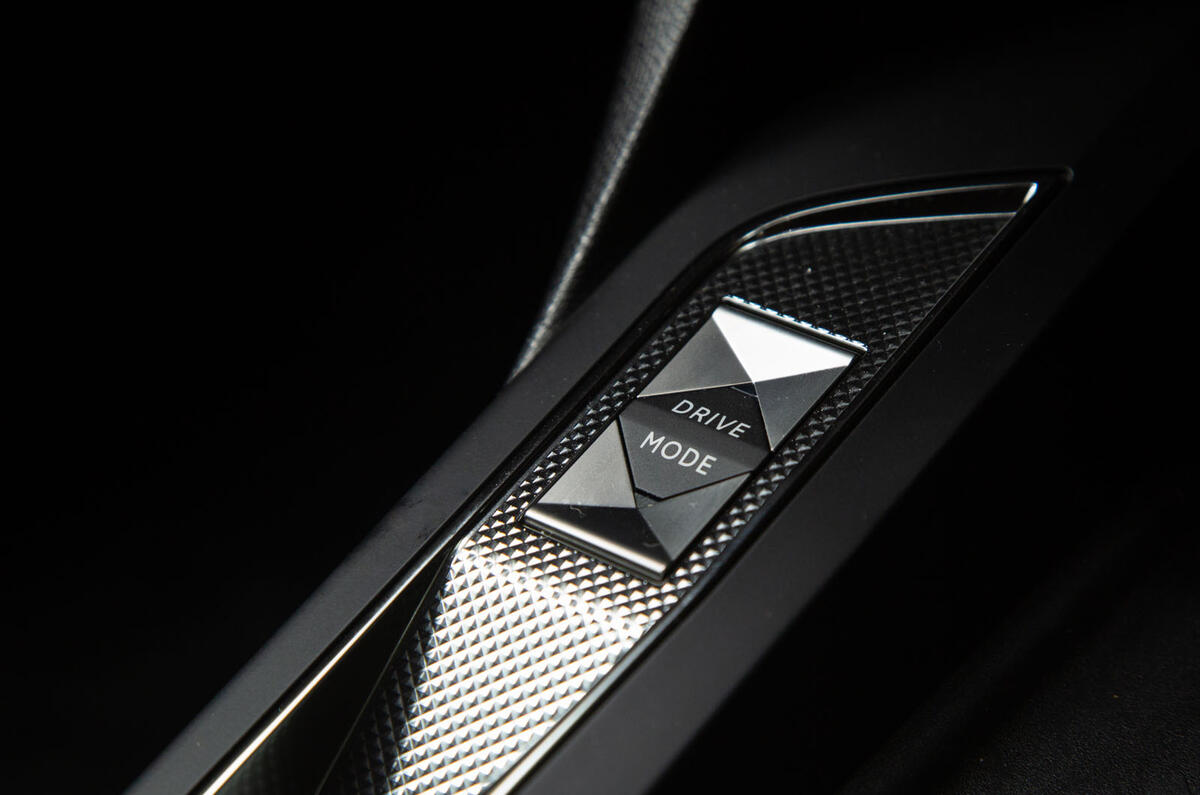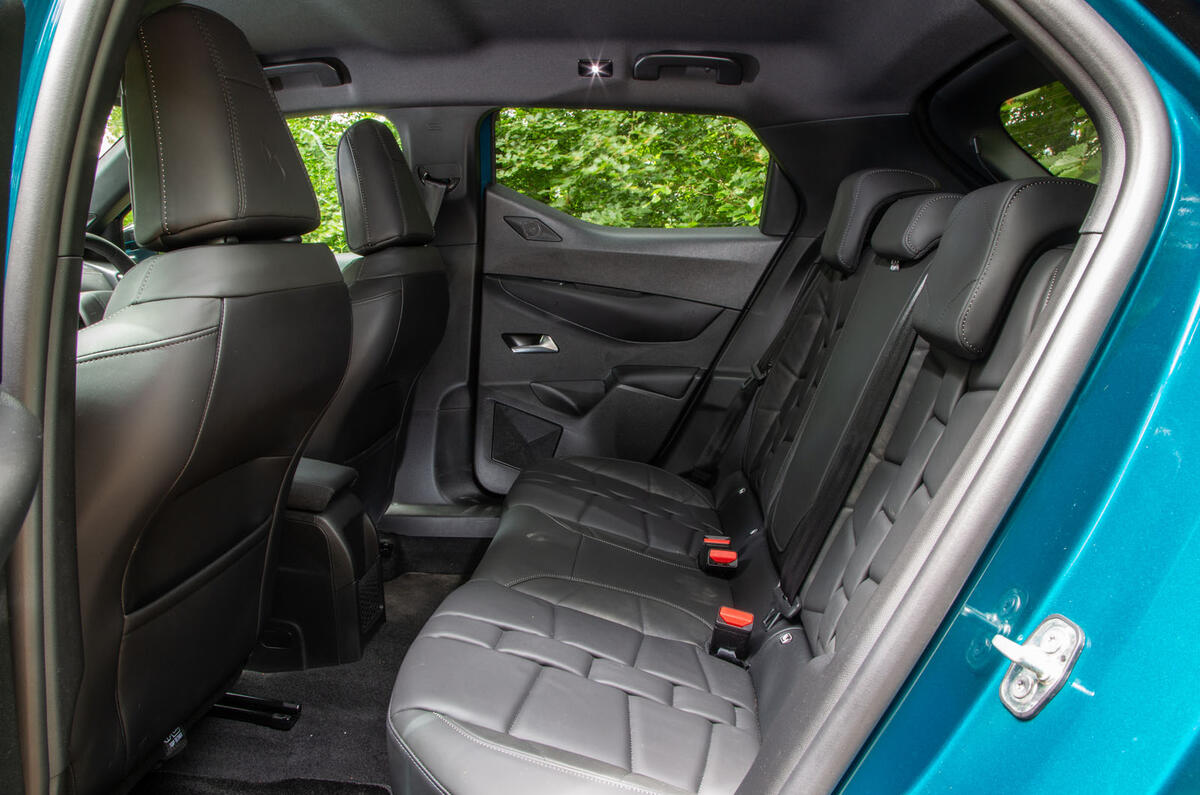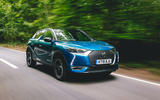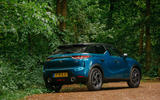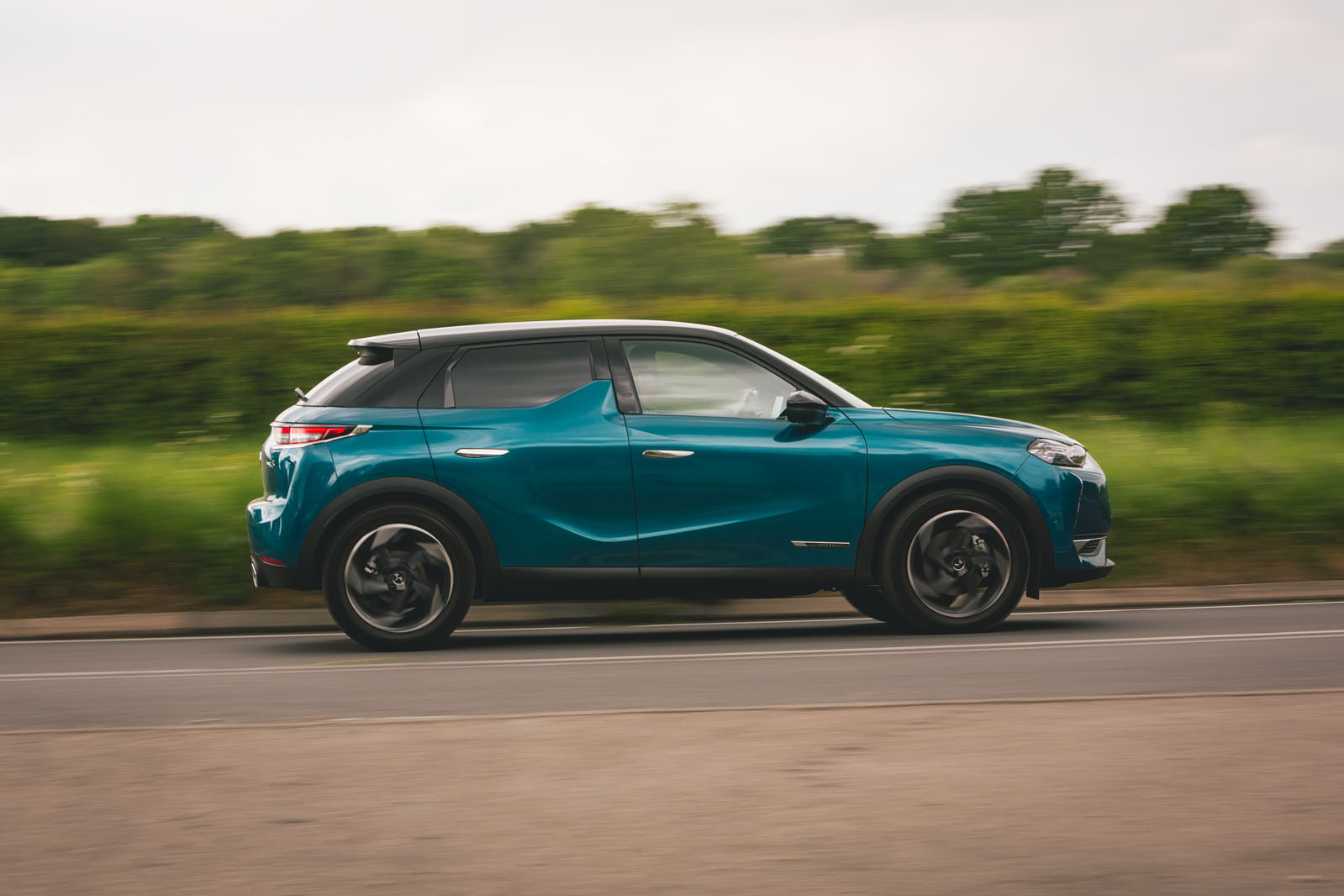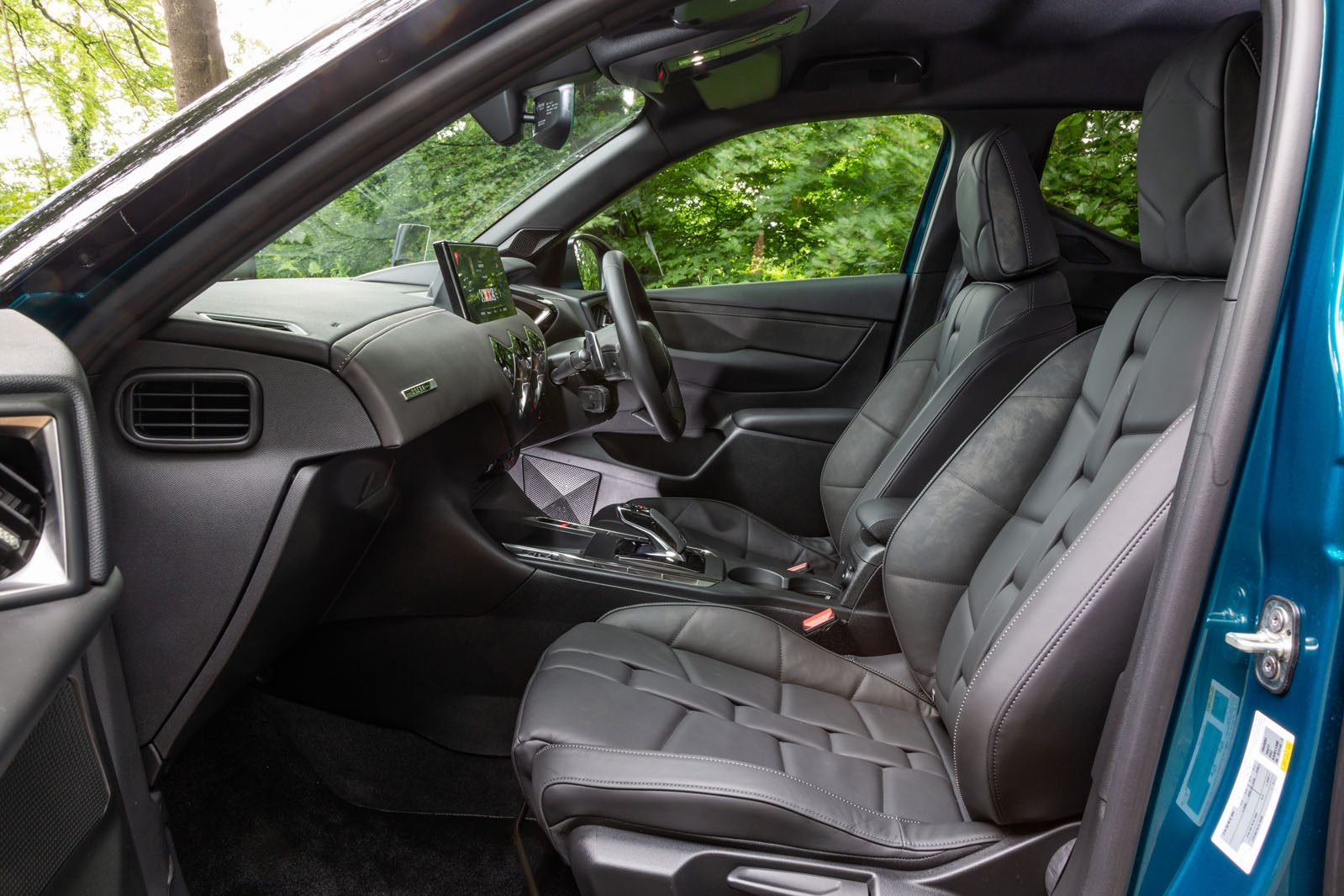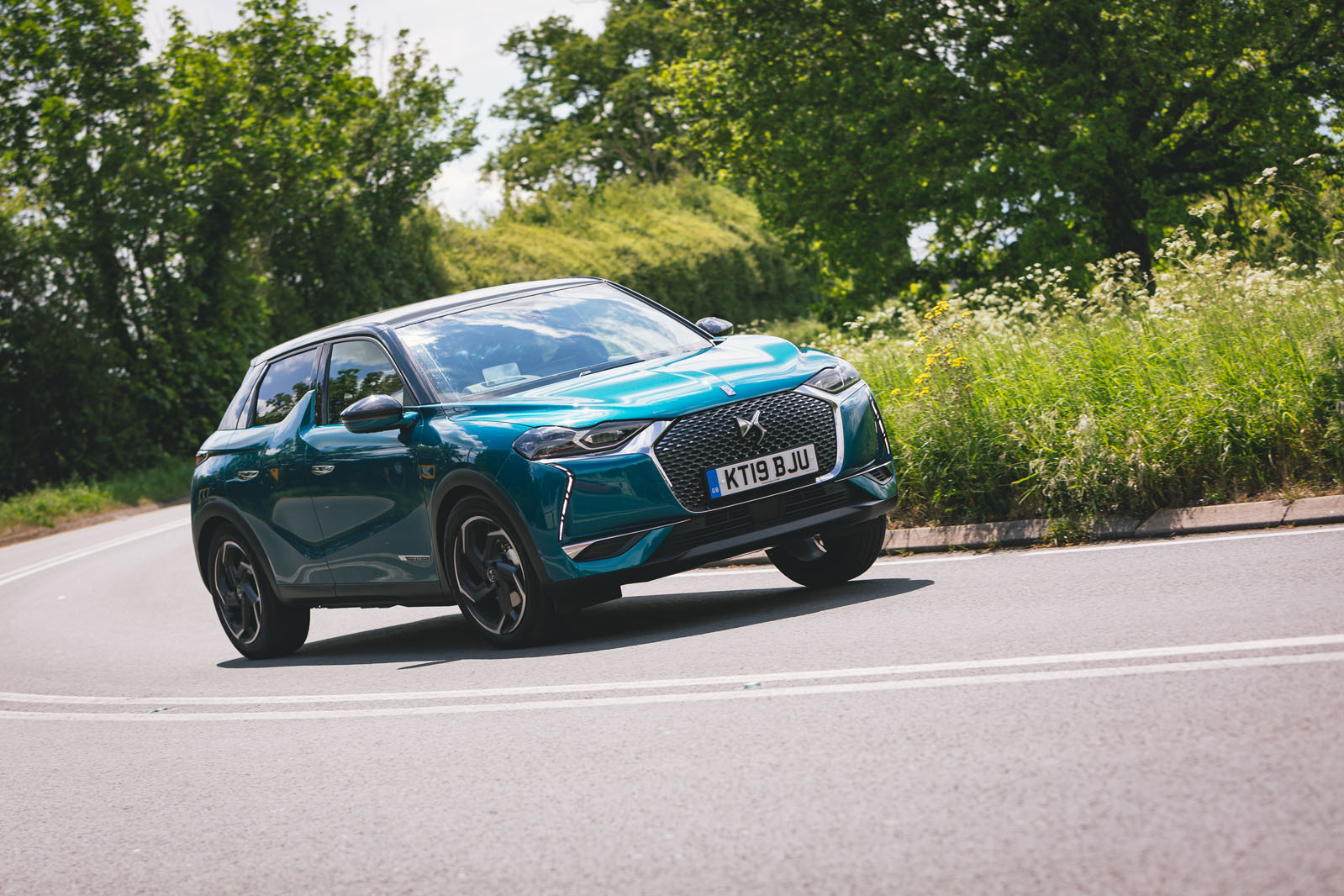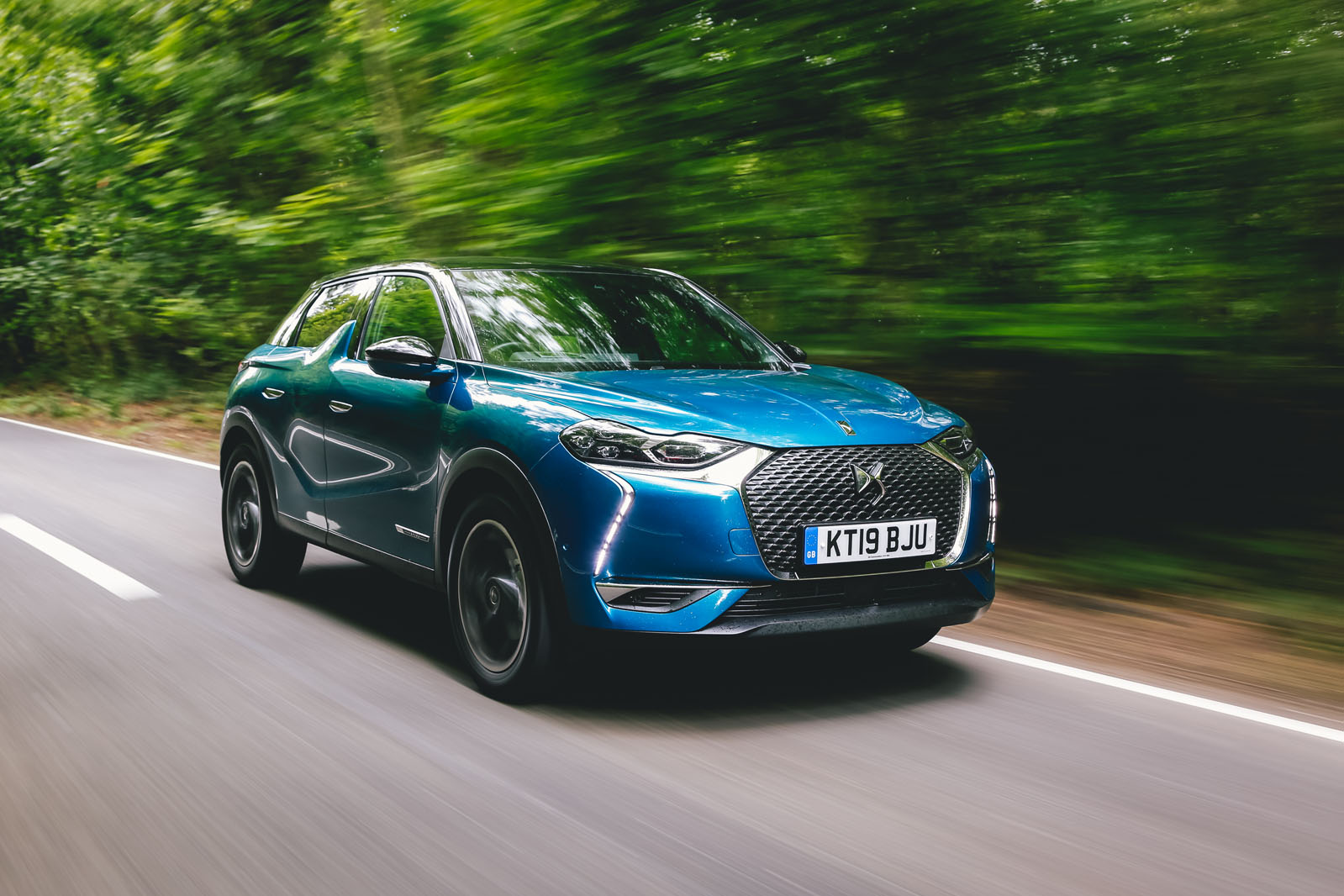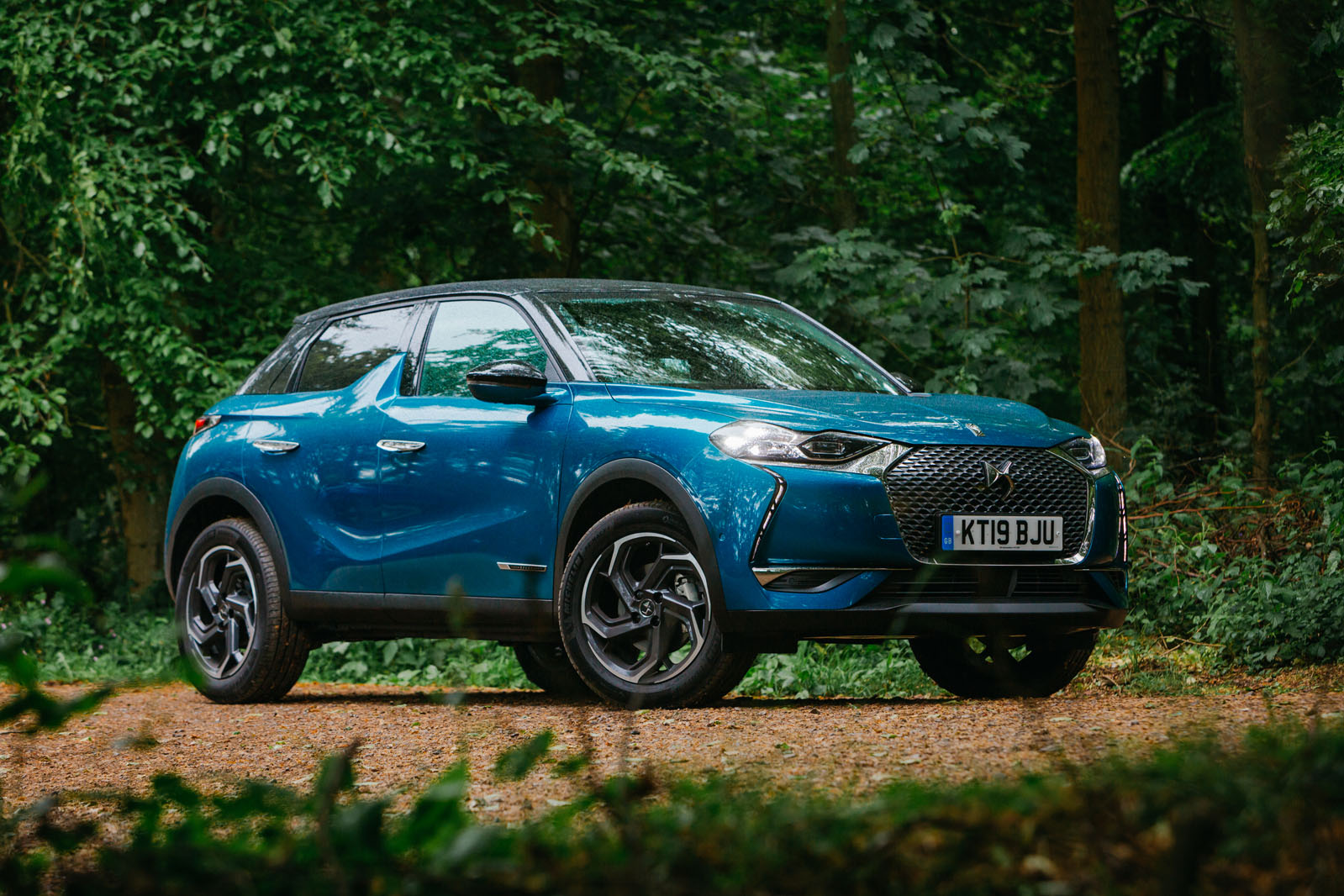The cabin of the DS 3 Crossback is one with no shortage of interesting distinguishing features, but the truth is that its various shortcomings and inconsistencies rob it of a really convincing selling point, either in terms of practicality or premium-worthy ambient richness.
The act of getting into the front seats could and should have been made easier than it might be in a normal supermini. However, although the car offers a broadly convenient raised hip point for your backside, your heels tend to be tripped up when entering the car unless you lift them very carefully over a sill that’s unusually high, wide and obstructive.
Once you’re aboard, the architecture and packaging of the front of the cockpit seems quite innovative. The air vents, instruments, infotainment display and the switchgear that controls it are all collected on a panel that sweeps across the fascia at a common height – but just underneath that, the dashboard and door panels are recessed away from you, making plenty of space for your knees and elbows.
Even though the leathers and mouldings of our test car were dark, that made for a pleasing sensation of space, and for good visibility, up front. The same isn’t delivered for those sitting in the back, however – the view out of the car hampered by a rising beltline and DS’s shark-fin bodyside styling feature.
Our upper-mid-level Prestige-trim test car came with DS’s Opéra-grade interior as a cost option (£950), which brought particularly soft black leather seats with a watch-strap upholstery motif, and a black and mottled bronze leather fascia panel with decorative stitching.
Between those upmarket trim elements and the stylised switchgear of the centre console, the car is at pains, in places, to convince you that it is a designer luxury good worthy of its price premium. In other places, however, the quite hard, plain, shiny and uninviting finishes of the lower secondary mouldings are unworthy of the same description.
Meanwhile, the DS 3 Crossback’s large touchscreen infotainment display and its digital instruments are another attempt to convince you of its sophistication doomed only to partial success, owing to the slightly clunky, tardy usability of the former and the latter’s omission of a really clear and readable ‘classic’ instrumentation display mode.
The 10.3in widescreen display would be a real rarity as standard equipment on a car at this price – but it only comes on Prestige-trimmed models and above. That means you could pay more than £27,000 for a Performance Line car and find that, while the standard-fitted system does include smartphone mirroring for Apple and Android phones, you don’t get factory satellite navigation.
Much as it might not come as a great consolation, the upper-level DS Connect system isn’t that impressive. It’s not one that lures you to interact with it through particularly slick graphics or a clever manual input device, and much of the real estate of the screen to either side is wasted when it’s displaying navigation mapping or radio tuner information.
The navigation is supplied by TomTom, and it’s respectable for usability and mapping detail but no better. The system comes with three years of live traffic information, online search functionality and fuel station, parking and weather information from purchase, after which it’s subject to subscription.



